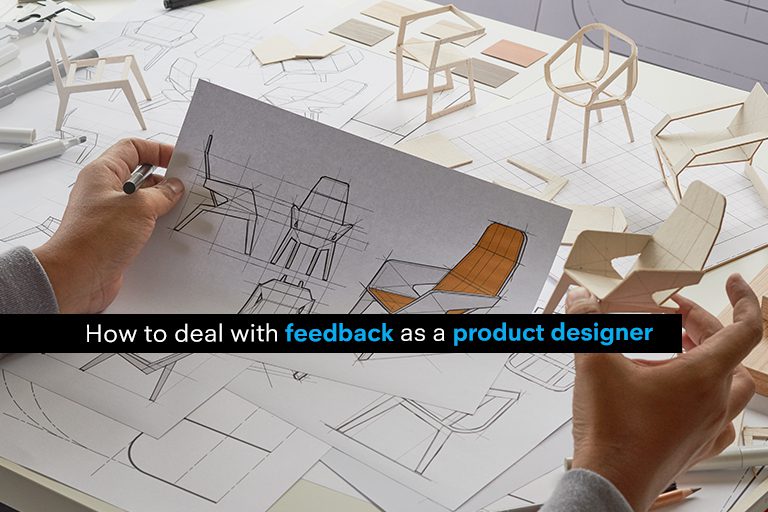Every designer in their journey gets feedback, sometimes it’s negative or let’s say more constructive. As a young designer one should remember this does not make you a bad designer. In fact, a key to learning, growing and expanding your knowledge is to turn a negative feedback or any feedback into a positive actionable point for yourself. For a product designer this feedback can come from fellow designers, product managers, engineers and/or senior management. Sometimes, this can be from users from a pilot study or during the testing process of the prototypes.
While feedback can be overwhelming sometimes, it’s essential to remember feedback is great for gathering perspective. For product designers, since the feedback is gathered from multiple audiences, it’s essential to set expectations first. Without setting the expectations it will be hard as a designer to work towards the next iteration with no particular reason.
Read more: Designing for emotions and mindsets
Here are a few pointer a product designer must keep in mind when it comes to feedback:
A. Evaluate the usefulness of the feedback
As a product designer, it’s your job to sort through the feedback to understand and figure out which parts of the feedback will get you closer to the overall project goals and which will not. In your own expertise you can break down some crucial points to see if you made certain small changes, will that give you the desired result – or will this need a change in approach.
B. Knowing when to push back
A key part of dealing with feedback as a product designer is knowing when to push back, knowing that not all feedback will achieve the project goals. And as an expert in the field, you hold skills, knowledge and ability to comprehend what an iteration can result into – will that yield results for the benefit of the users, or will it simply complicate the use. Clients and companies pay you for your expertise as a product designer, when you push back on a feedback – explain your rationale or offer alternatives to the approach suggested.
Read more: How to get your children ready for design studies?
C. Knowing the difference between bad feedback and negative feedback
Let’s understand what makes feedback bad or negative. When your client or manager tells you – ‘they do not like the shade of red, can it be less bright?’ – here they are expressing exactly what they do not like and also providing feedback for why. This is negative feedback that helps you comprehend what needs to be changed. Bad feedback on the other hand is your client saying – ‘I don’t like it’ – that does not give you any idea as to why the client is not happy with the work. This is when you can feel more frustrated with the feedback without having a clue on what to work towards.
When this happens, make sure you have a set of questions ready to ask to your client based on your initial brief. Ask them – if they want changes in font, color, size/ shape of text, visuals etc.
A key trait of a product designer is to always ask the questions during the feedback process and make notes on what their clients agree with or disagree with. This will help you present a solution to the client without going back and forth multiple times.
Read more: Design tools for metaverse
D. Turning any feedback into useful feedback
Whether your boss or client has offered you bad, negative or neutral feedback, it’s up to you, as a designer, to turn this feedback into a useful one that aids your journey as a product designer. This is where asking questions, probing your client comes into picture. Remember, a product design is meant for a large number of audiences, hence making the most of the feedback in all stages during the process is key to becoming a successful product designer. Asking questions like:
Does your client have any specific examples/ references of the design they like?
Do they like the kind of creatives/visuals you have built so far?
Do they think the color palette you chose works?
Also read: Emerging trend of strategic design
E. Considering how negative feedback is helpful
A great way to deal with negative feedback is realizing how it brings you a step closer to meeting the goal of the design project. Building a digital product, a physical one or otherwise – it’s the end result that will matter. Only way to get there is to open the communication channels with your clients and managers, along with all project stakeholders.
Experts do mention that for a product designer, inviting negative feedback is key to being successful. Keep asking what the stakeholder wants from a design, what they like about a design, but importantly – what they do not like. This is sure to give you more insights and power as a designer.
F. Take the source into consideration
If your feedback is coming from a pilot research, you know this is crucial data in the form of feedback that as a product designer you should be able to implement when iterating the design. This can mean small changes, or changing the whole design process all together – either way, if the users have clearly stated what they do not like – changes to the design here become unavoidable. Success and wide acceptance of your product has to remain your focal point.
Also Read: Product design trends in sportswear and outdoor equipment
Every bit of feedback gets you a step closer to your fully functioning optimized and efficient design. Remember that everyone is on your team and all your goals are the same – Creating a phenomenal product. Avoid building up the feedback in your mind, rather openly question and seek advice on how to better it. Not only will this offer a great product but also create a product that people love, meets their needs along with brands business goals. Vital to set aside your ego and not to get defensive when working through the feedback phase in a design project.
Two power tools for all product designers here will be a. Listening to what others are saying and b. observing/ reading what is said between the lines. This will help you to turn feedback into actionable ideas to improve the end result.



Want to Become a Designer ?
Strate is a unique design school that nurtures your talents as a designer by offering state-of-the art designing courses in Bangalore.
Join Strate